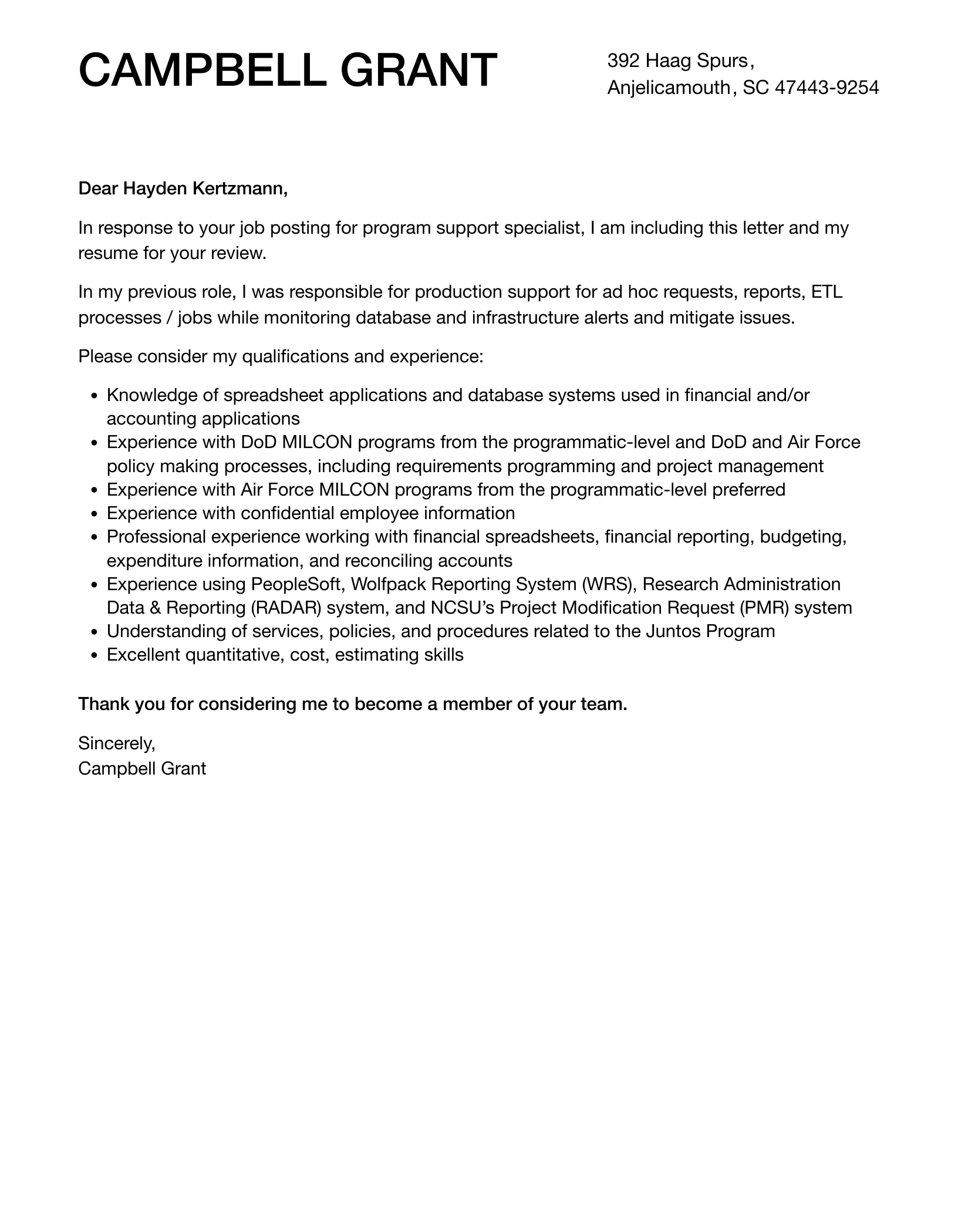Support Specialist Cover Letter Secrets Revealed
Landing your dream job as a Support Specialist starts long before the interview. It begins with a well-crafted cover letter. In today’s competitive job market, a compelling cover letter is your first impression, your chance to shine, and showcase why you are the perfect fit for the role. It’s more than just rehashing your resume, it’s about telling a story, demonstrating your understanding of the company, and ultimately, securing an interview. This guide unveils the secrets to creating a support specialist cover letter that gets noticed, read, and acted upon.
Understanding the Support Specialist Role
Before you start writing, you need a solid understanding of what a Support Specialist does. This role is the backbone of any customer-centric organization, providing essential assistance and solutions to clients and users. A Support Specialist cover letter should reflect this understanding and show you can deliver the best support experience. You should clearly convey that you’re aware of the daily challenges and objectives of the position.
Key Responsibilities of a Support Specialist
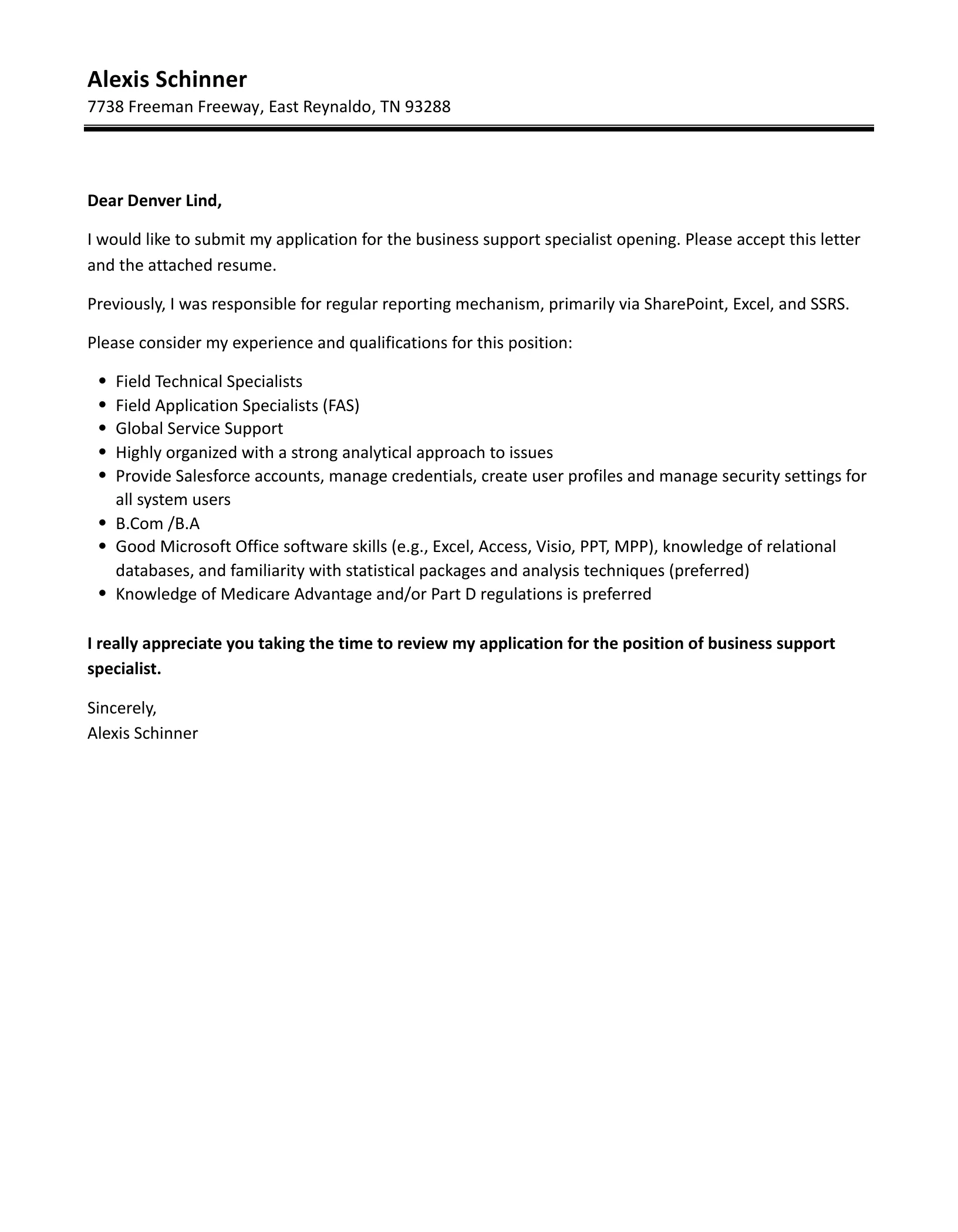
Support Specialists wear many hats, from troubleshooting technical issues to providing product information and guiding users. Typical responsibilities include responding to customer inquiries via phone, email, and chat, diagnosing and resolving technical problems, documenting customer interactions, and escalating complex issues to the appropriate channels. Your cover letter should emphasize your ability to manage these varied tasks effectively.
Essential Skills for Success
Support Specialists need a blend of technical expertise and soft skills. Technical skills include proficiency in relevant software and platforms, problem-solving abilities, and a solid understanding of the company’s products or services. Soft skills are equally crucial; these include excellent communication, active listening, empathy, and the ability to remain calm under pressure. Your cover letter should highlight both these essential skills, ensuring your potential employer knows you’re a well-rounded candidate.
Crafting a Compelling Cover Letter
Now comes the writing part. Crafting a compelling cover letter is about more than listing your skills and experience; it’s about presenting them in a way that captures the hiring manager’s attention. Think of your cover letter as a narrative that showcases your ability to solve problems and provide excellent support. Each sentence should be crafted with intent, and every paragraph should contribute to your overall goal: getting an interview.
Header & Contact Information
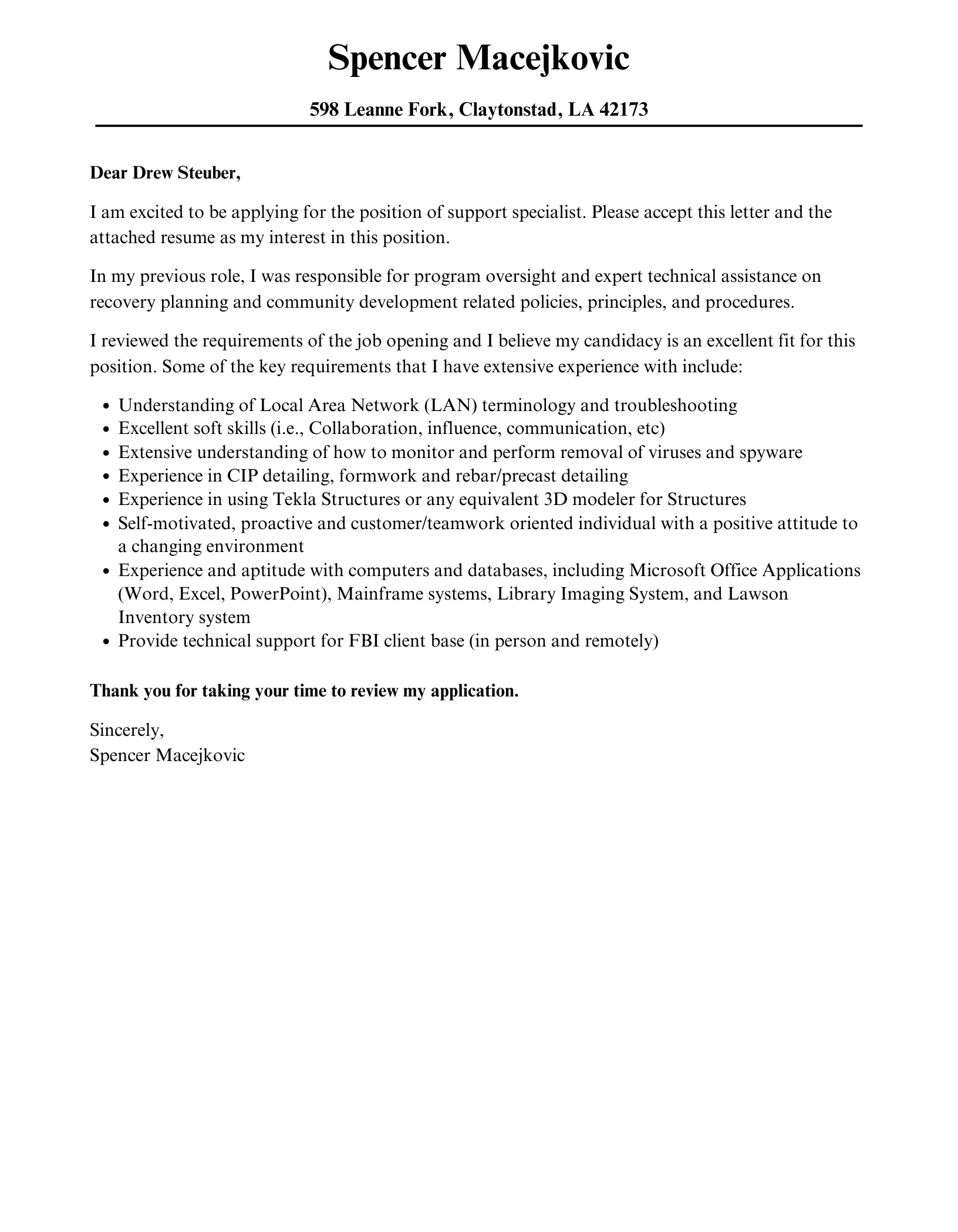
Start with a professional header that includes your name, contact details, and the date. Make sure your contact information is accurate and up-to-date. Include your phone number, email address, and a link to your LinkedIn profile or online portfolio if you have one. The header sets the tone for the rest of your letter, so make sure it looks clean and professional.
Opening Statement & Hook
Your opening paragraph is your hook, the first impression you make on the hiring manager. Start with a strong, attention-grabbing sentence. Briefly state why you’re writing and why you’re excited about the specific support specialist position. Avoid generic phrases; show enthusiasm and tailor your opening to the company and the role. For example, you might mention a specific project you admire, or your understanding of a key challenge the company is facing.
Highlighting Relevant Skills & Experience
The body of your cover letter is where you showcase your skills and experience. Select the most relevant aspects from your resume and expand on them, providing specific examples that demonstrate your ability to excel in the support specialist role. Mention your experience with customer service, technical troubleshooting, and any relevant software or tools. Instead of simply listing responsibilities, describe your accomplishments and the positive impact you had in previous roles.
Quantifying Achievements with Data
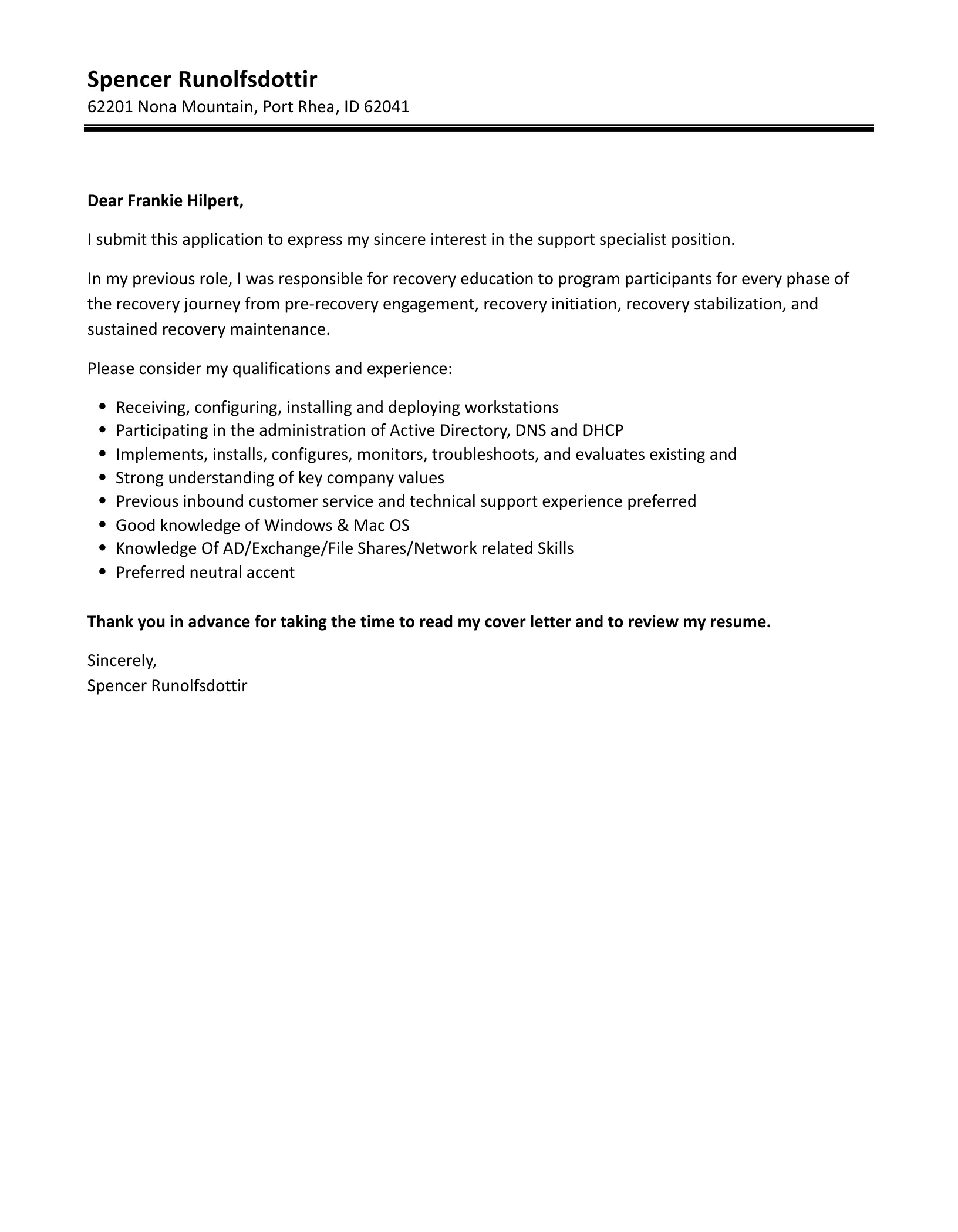
Whenever possible, quantify your achievements. Use numbers and data to demonstrate your impact. Instead of saying ‘Improved customer satisfaction,’ say ‘Increased customer satisfaction scores by 15% through proactive problem-solving.’ Numbers make your claims more credible and show the tangible results you’ve achieved. This is a powerful way to make your cover letter stand out.
Showcasing Soft Skills & Personality
While technical skills are important, don’t neglect your soft skills. Support Specialists need strong communication, empathy, and problem-solving abilities. Describe how you’ve used these skills to resolve customer issues, build rapport, and go above and beyond expectations. Your cover letter is a chance to demonstrate your personality, so let your enthusiasm and genuine interest in helping others shine through.
Tailoring Your Letter to the Job Description
The best cover letters are tailored to the specific job description. Review the job posting carefully and identify the key requirements and keywords. Then, adjust your cover letter to highlight the skills and experiences that align with those requirements. This shows the hiring manager that you’ve taken the time to understand the role and are a good fit for the company. Generic cover letters are easily spotted and often discarded.
Researching the Company & Understanding Needs
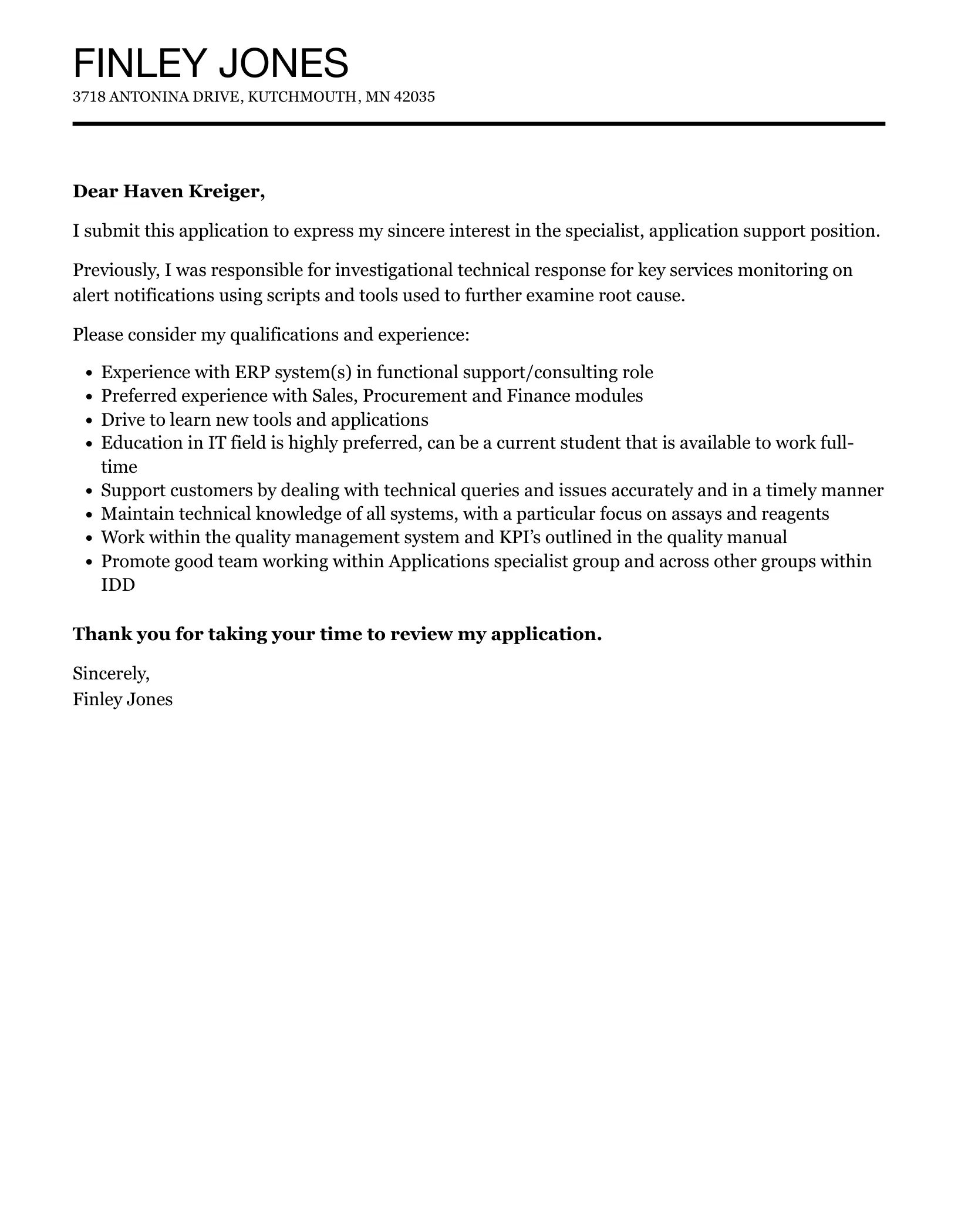
Before writing your cover letter, research the company. Understand their mission, values, and recent projects or initiatives. Show that you understand their needs and how you can contribute to their success. This will set you apart from other candidates and demonstrate your genuine interest in working for the company. Refer to their website, social media, and news articles to gather insights.
Using Keywords Effectively
Use keywords from the job description throughout your cover letter. This will help your application pass through applicant tracking systems (ATS) and catch the hiring manager’s attention. But don’t just stuff keywords into your letter; use them naturally within the context of your skills and experience. The goal is to make it clear that you have the qualifications and experience the company is seeking.
The Closing & Call to Action
Your closing paragraph should reiterate your interest in the role and thank the hiring manager for their time and consideration. Include a clear call to action, such as ‘I am eager to discuss my qualifications further in an interview’ or ‘I look forward to hearing from you soon.’ This shows confidence and encourages the hiring manager to take the next step.
Proofreading and Formatting
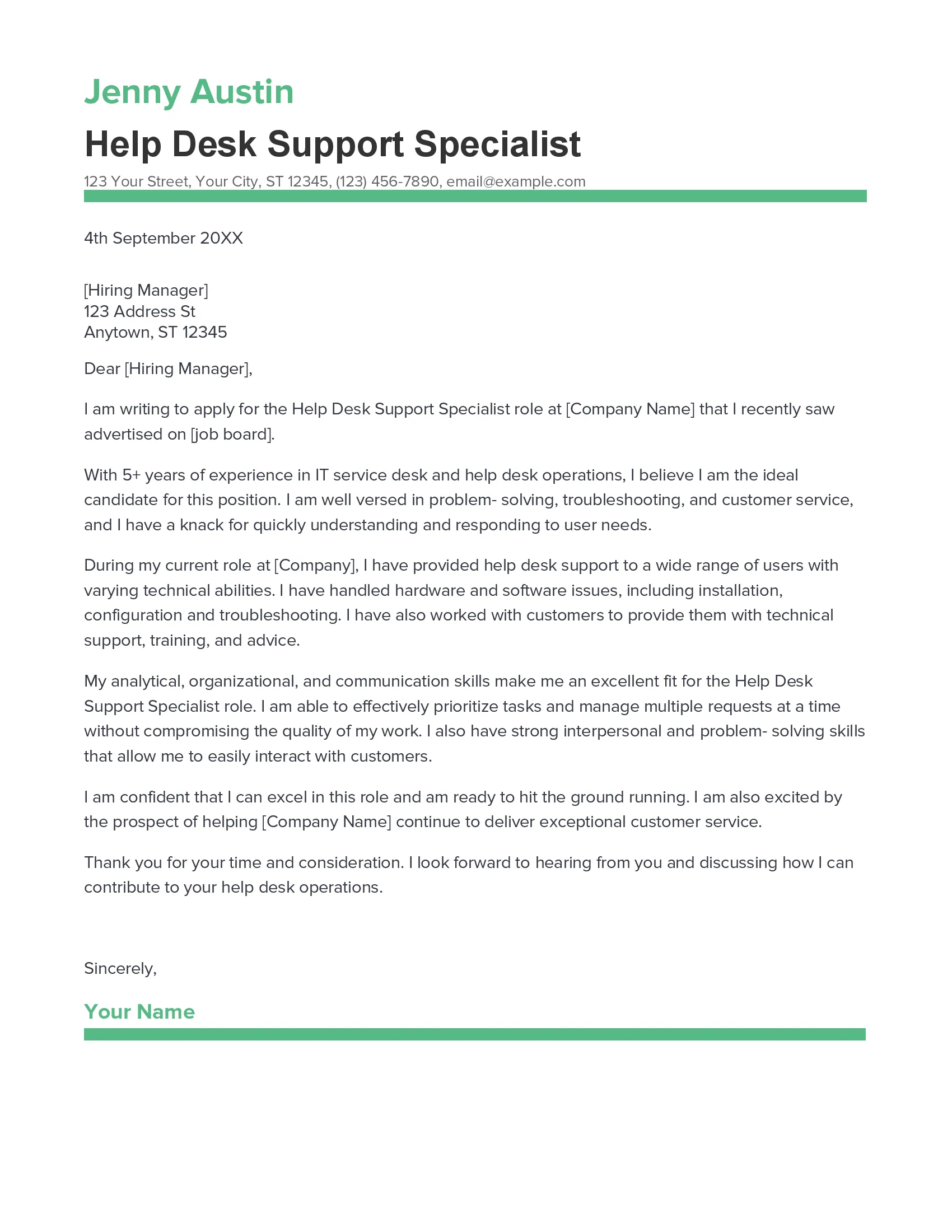
Once your cover letter is written, take the time to proofread it carefully. Typos, grammatical errors, and formatting issues can undermine your credibility. Use a spell checker, but don’t rely on it completely. Read your letter aloud to catch any awkward phrasing or errors. Ask a friend or colleague to review it as well. Ensure your cover letter is easy to read, with clear headings and concise paragraphs. The goal is to make a great impression.
Common Cover Letter Mistakes to Avoid
Avoid these common mistakes to make your cover letter as effective as possible. The goal is to present yourself as a polished, professional candidate ready to take on the challenges of the support specialist role.
Grammar and Spelling Errors
Grammar and spelling errors can damage your credibility and make you appear careless. Always proofread your cover letter meticulously and use a grammar checker. Also, be certain that the tone is professional and concise.
Generic and Unfocused Content
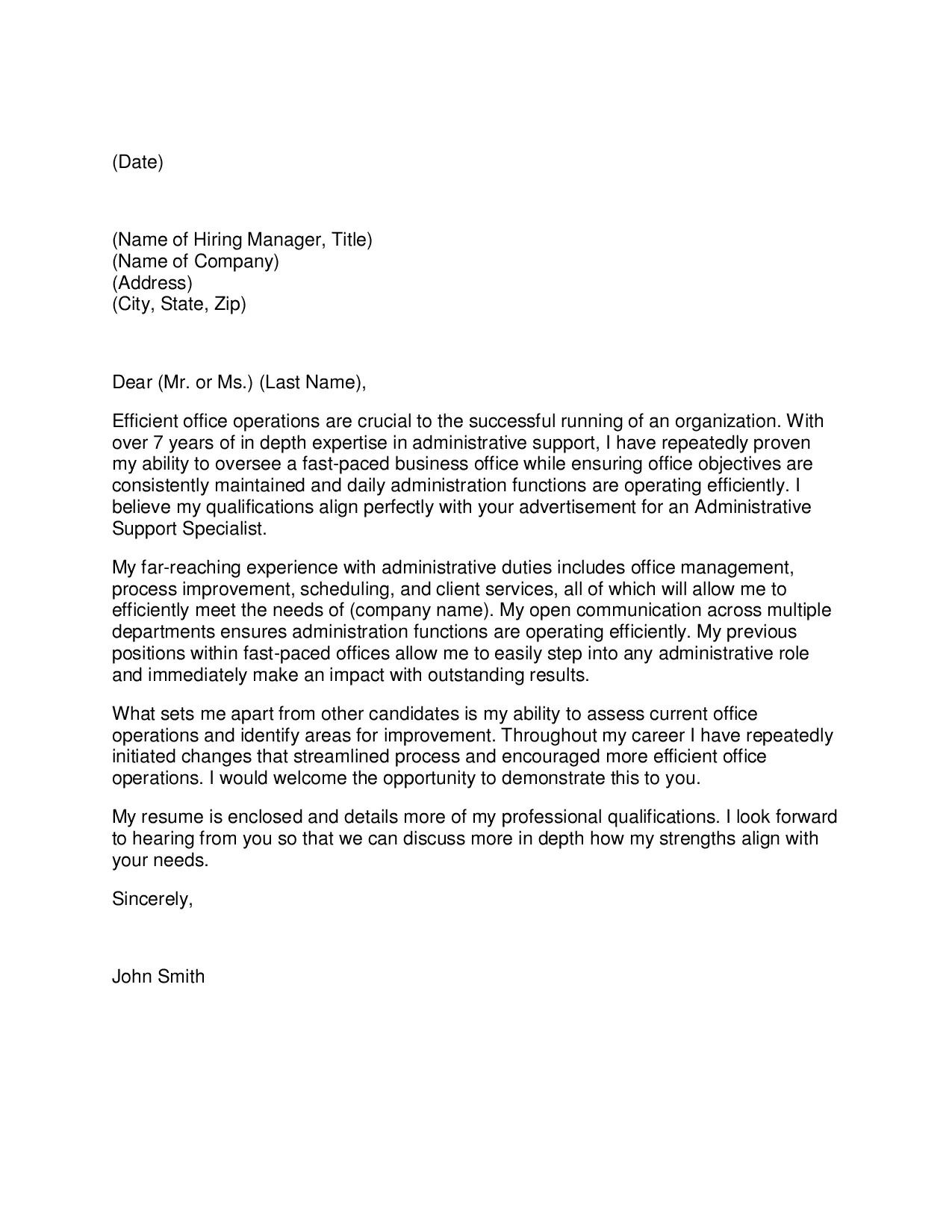
Avoid using a generic cover letter. Tailor each letter to the specific job and company. Generic cover letters are easy to spot and will not make a significant impact. Focus on the specific requirements of the role and highlight your most relevant skills and experiences. Showcase your enthusiasm and a genuine interest in the position.
Ignoring the Job Description
Failing to align your cover letter with the job description is a major mistake. Carefully read the job posting and highlight the skills and experiences the employer is looking for. Tailor your letter to address those needs directly. Ignoring the requirements shows a lack of attention to detail and a lack of understanding of the role. Customizing your cover letter demonstrates your understanding and enthusiasm for the position.
Finalizing & Submitting Your Cover Letter
Before submitting your cover letter, double-check everything. Ensure your contact information is correct, the formatting is clean and professional, and there are no errors. Save your cover letter as a PDF to preserve the formatting and make sure it looks the same on any device. Then, submit your cover letter along with your resume. By following these steps, you’ll significantly increase your chances of landing an interview and securing the support specialist position. Good luck!
